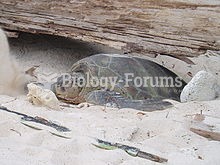Answer to Question 1
Students should know that Hawaiian volcanoes follow a pattern of eruption, building, and erosion. Volcanism builds up the active submarine volcanoes of the Hawaiian chain until they crest the surface of the ocean. Once the volcanoes are above water and dormant, weather and erosion can affect them. The volcano diminishes back into the oceanic crust due to its massive weight and loses elevation. Rain erodes the volcano, creating deeply incised valleys.
Answer to Question 2
Rain Shadow: Leeward areas below mountain crests that receive low average rainfall. The student could mention the Islands of Kahoolawe, Lanai, and Niihau, which are drier because they are in the rain shadow of their larger neighbors, or a similar example from the text showing that the rain shadow produces drier areas.
Ecosystem: Complex of evolving and interacting plants and animals living within a particular natural environment, usually mutually dependent on each other through energy exchange. Students could write about the Hawaiian coral reefs, or they could talk about the ecosystem of Hawai'i that was disrupted by the arrival of the Polynesians.
Endemic Species: A type of plant or animal native to its current zone of habitation. Students could give an example from any of the native species to Hawai'i, such as the Hawaiian or Nene goose, Honeycreepers, or they could point out that Hawai'i has no endemic land mammals.
Adaptive Radiation: Genetic changes in organisms as they disperse (radiate out) from a central point. Students could mention the Honeycreepers, who are closely related to the North American Finch. Biologists believe that the Finches were blown off course or flew to Hawai'i. Over the years, their descendants adapted to over 22 distinct species, each evolved to feed on particular types of native Hawaiian pants.






